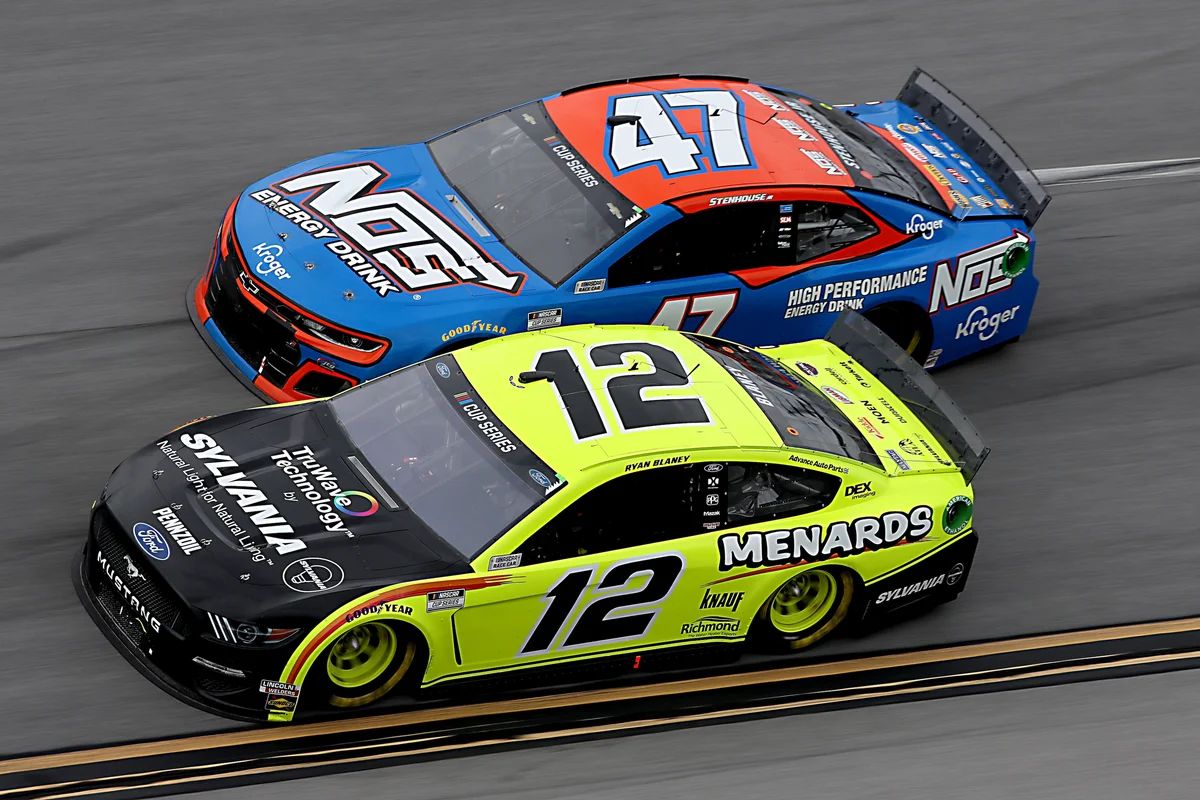Ricky Stenhouse Jr. NASCAR journey did not begin as a family legacy or follow the familiar route set by stars like Dale Earnhardt Jr., Chase Elliott, or Kyle Busch. Born into a family where racing was a passion but not necessarily a guaranteed path, Stenhouse’s introduction to motorsports started with dirt tracks. As a baby, he accompanied his father to races, absorbing the excitement and unpredictability of the sport from an early age.
His childhood interest in racing focused on dirt surfaces rather than major racing circuits, with NASCAR remaining far from his ambitions for several years. By the time he considered a professional path, he had already shown remarkable talent and speed in the USAC National Sprint Car series, drawing attention for his bravery on the track.
Breakout Years and the Key Decisions Behind His Ascent
Before making his mark in NASCAR, Stenhouse built his skills in various sprint car competitions. His ability was notable enough to earn him a spot driving for Tony Stewart‘s team in both midget and sprint car races, which proved to be a turning point.
Reflecting on these formative years during a conversation with Chase Holden, Stenhouse said,
I didn’t get to race sprint cars very long. My career I feel like happened, you could kind of say overnight, at least like that’s what it felt like. And looking back, it definitely, for me, I raced go-karts.
— Ricky Stenhouse Jr., NASCAR Driver

Originally, Stenhouse considered advancing to micros or midgets, but his father chose a different route, betting on his son’s readiness to handle a full-sized sprint car. This decision, as it turned out, shaped his trajectory. When Stenhouse was just 15 and a half, he was given the chance to compete, launching his professional journey.
Between his half-season debut in 2003 and full campaigns across 2004, 2005, and 2006, Stenhouse earned respect on the sprint car circuit. It was in 2007, however, at Manzanita Speedway, that he captured wider attention with two victories in three outings during the Copper on Dirt event.
Transition to Major Leagues and Rapid Career Transformation
Stenhouse recalled experimenting with different divisions, stating,
Started dabbling a little bit in the non-wing USA stuff,
and elaborated,
Then 2007 is when I ended up running for Tony sprint car team. Raced USA all that year, and then all of a sudden at the end of that year I’m signing a contract with Ralph Fenway Racing to race in the ARCA series. So you know it happened really fast. I would say I ran full-time sprint cars for… like four years. It wasn’t very long.
— Ricky Stenhouse Jr., NASCAR Driver
Still in his teens and fresh out of high school, Stenhouse transitioned swiftly into being a paid professional, though he admitted uncertainty about his long-term prospects. As he described,
And then I didn’t really think that there was an opportunity to go to NASCAR, but every door just kind of kept opening to eventually have that opportunity.
— Ricky Stenhouse Jr., NASCAR Driver
Building on his back-to-back wins in USAC National Sprint Car and Silver Crown main events, Stenhouse was called in to replace Tracey Hines at Tony Stewart Racing after Hines was sidelined by injury. In just his second race with TSR, Stenhouse proved his skills by driving the No. 21 car to victory at Tri-State Speedway in Indiana. This performance underscored how effectively he could compete across a variety of divisions and racing formats.
Significance and Impact of Stenhouse’s Progression
Ricky Stenhouse Jr.’s ascent from local dirt tracks to high-profile NASCAR events defied conventional expectations. Unlike contemporaries who followed familial footprints, his journey highlights the power of raw talent, timely choices by his father, and networking opportunities such as his involvement with Tony Stewart’s team. The opening of doors at each crucial juncture helped him break out of the sprint car circuit and into the national spotlight, setting a precedent for aspiring drivers with unconventional backgrounds.
Stenhouse’s ongoing presence in top-level racing continues to show that pathways to success in motorsports remain diverse. His future decisions and performances, especially in key venues like Tri-State Speedway, will be watched closely by fans who appreciate perseverance and unexpected triumphs in the sport.
